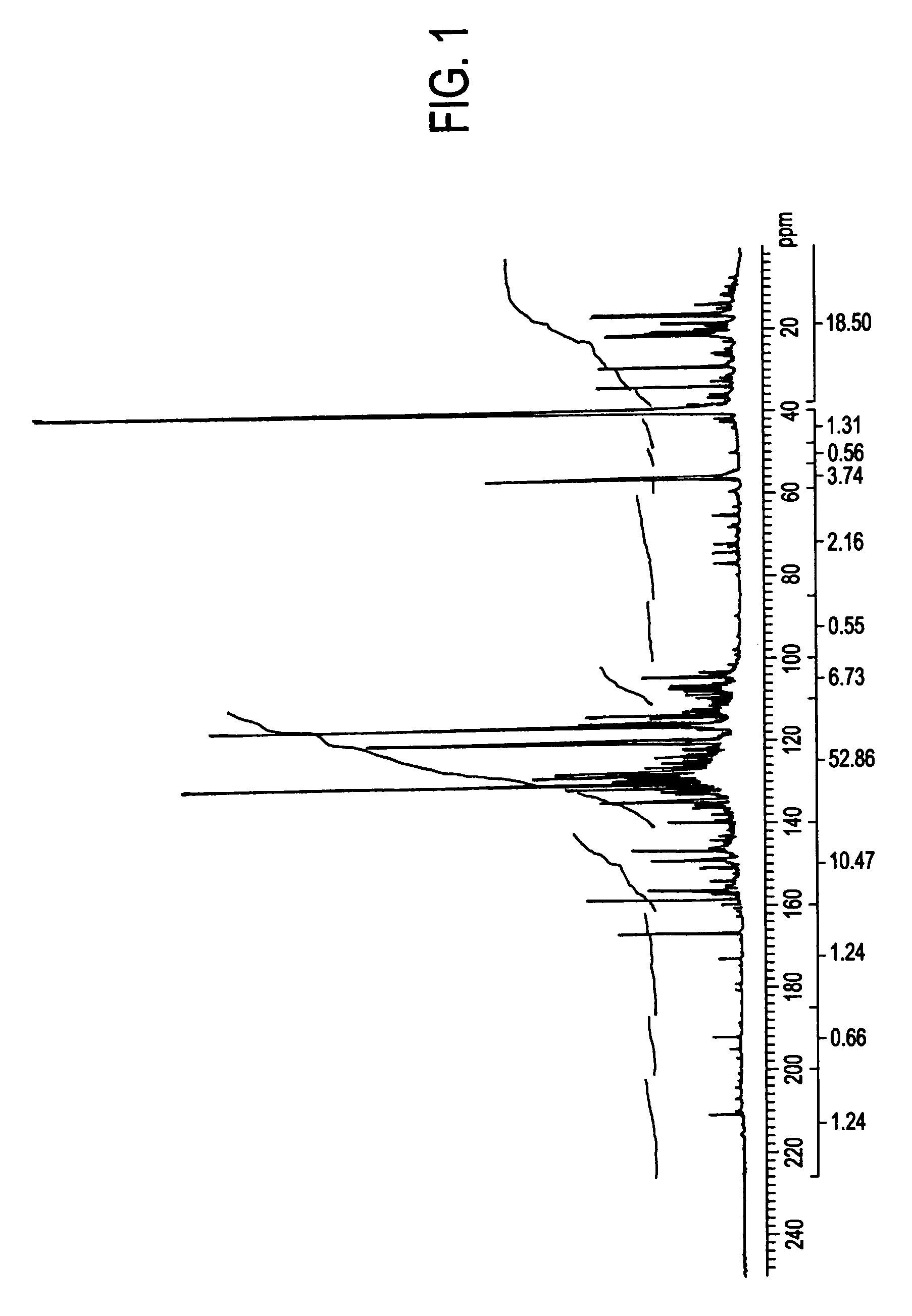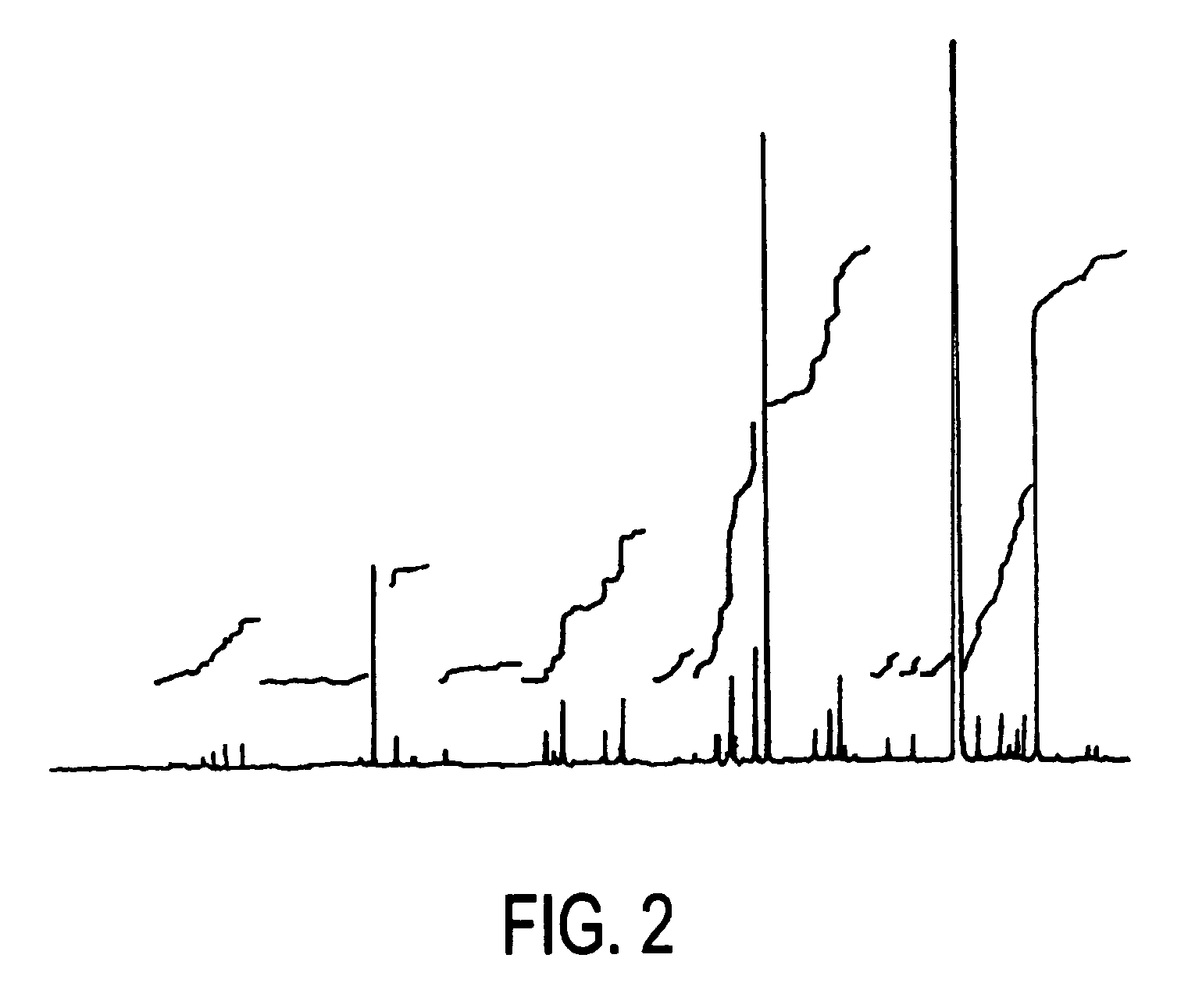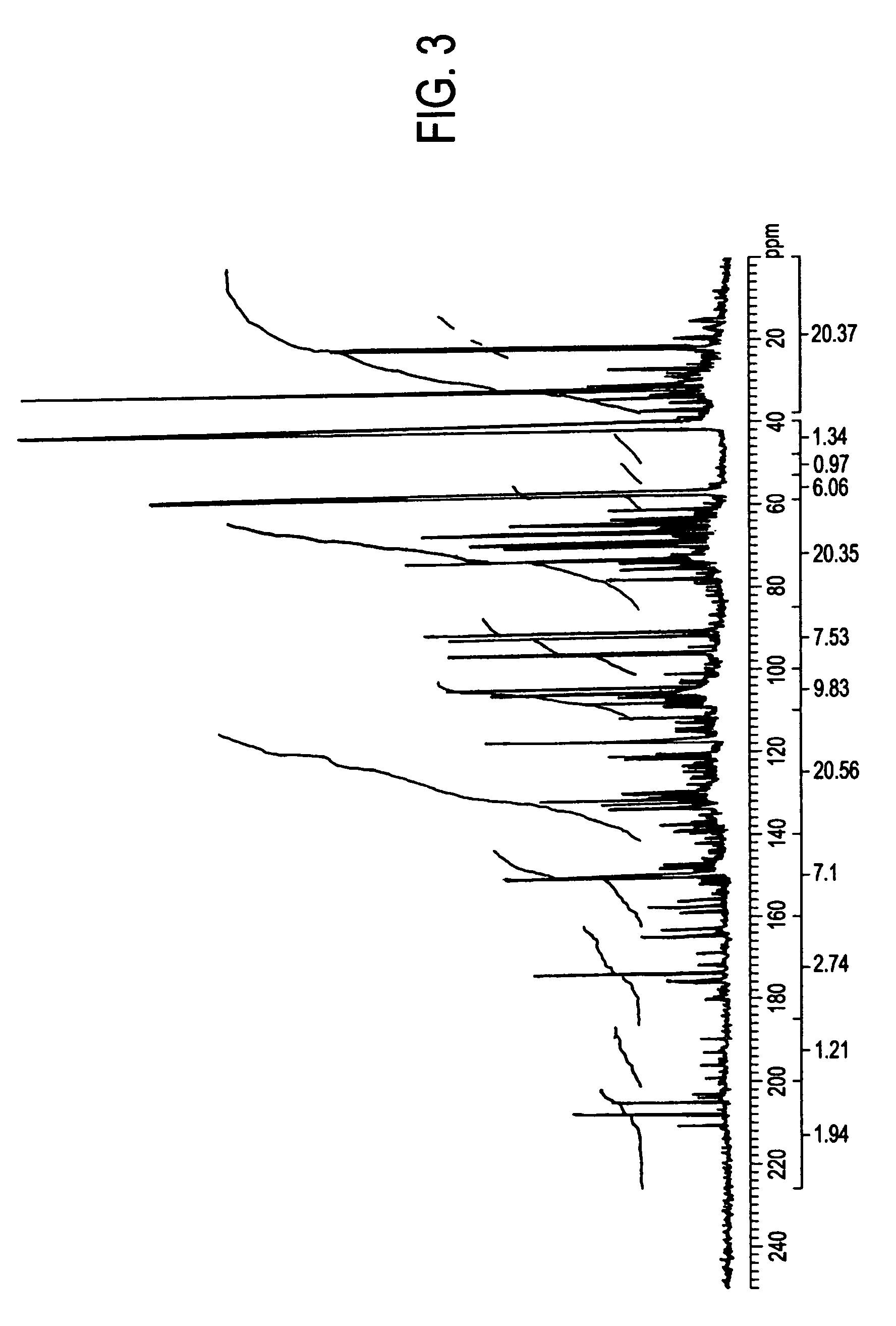Fractional catalytic pyrolysis of biomass
a pyrolysis and biomass technology, applied in the field offraction, can solve the problems of high moisture content, poor stability of biocrude oils, and general instability of liquid products (bio-oil or biocrude), and achieve the effect of eliminating the need for further processing steps
- Summary
- Abstract
- Description
- Claims
- Application Information
AI Technical Summary
Benefits of technology
Problems solved by technology
Method used
Image
Examples
example 1
Preparation of Feedstocks and Catalyst
[0033]The feedstock used for this experiment was a hybrid poplar whole wood ground in a Wiley mill (model 4) to pass a 1-mm screen. The moisture content of the feed was 5%. A proprietary catalyst (VPISU-001-H-ZMS-5 zeolite from Exxon Mobil of Irving, Tex.) was used for the runs. Two hundred gram batches of this catalyst were used for the fluidized bed pyrolysis experiments.
example 2
[0034]The reactor consisted of a 50 mm (2-in) schedule 40 stainless steel pipe, 500 mm (20 in.) high (including a 140-mm (5.5 in.) preheater zone below the gas distribution plate) and equipped with a 100-μm porous metal gas distributor. The fluidizing medium was the above proprietary catalyst, and the bed was fluidized with nitrogen. The reactor was externally heated with a three zone electric furnace. The reactor tube contained a bubbling fluid bed with back mixing of the feed and catalyst.
[0035]The biomass was loaded into a feed hopper (batch-wise) and conveyed by a twin-screw feeder into an entrainment compartment where high-velocity nitrogen gas entrained the feed and carried it through a jacketed air-cooled feeder tube into the fluidized bed. The pyrolysis temperature was maintained at 500° C. and the apparent pyrolysis vapor residence time was about 1 s. The apparent residence time of gases and vapors is defined as the free reactor volume (the empty reac...
example 3
[0040]The pyrolysis gases were sampled and analyzed on a Shimadzu GC14A sold by Shimadzu Corp. of Kyoto, Japan. Three packed columns (Porapak N, molecular sieve 5A, and Hysep Q, sold by Agilent Technologies of Santa Clara, Calif.) connected in series were used to analyze the gases. The oven was temperature programmed and a thermal conductivity detector was used. The chromatogram conditions are shown below:[0041]Columns: 3.2 mm×2 m Porapak N 80 / 100 mesh; and 3.2 mm×2 m Molecular sieve 5A 60 / 80 mesh, and 3.2×2 m Hysep Q 100 / 180 mesh.[0042]Detector: Thermal conductivity (TCD) at 200° C.[0043]Injection temperature: 150° C.[0044]Carrier gas: helium at 30 mL / min.[0045]Oven temperature programming:[0046]Initial temperature: 30° C. for 3.00 min.[0047]Level 1: Heating rate 20° C. / min; final temperature 60° C. for 4 min.[0048]Level 2: Heating rate 25° C. / min; final temperature 200° C. for 9 min.
[0049]Method of separation: Column 1 (Porapak N) separated the sample into two fraction...
PUM
| Property | Measurement | Unit |
|---|---|---|
| temperature | aaaaa | aaaaa |
| temperature | aaaaa | aaaaa |
| temperature | aaaaa | aaaaa |
Abstract
Description
Claims
Application Information
 Login to View More
Login to View More - R&D
- Intellectual Property
- Life Sciences
- Materials
- Tech Scout
- Unparalleled Data Quality
- Higher Quality Content
- 60% Fewer Hallucinations
Browse by: Latest US Patents, China's latest patents, Technical Efficacy Thesaurus, Application Domain, Technology Topic, Popular Technical Reports.
© 2025 PatSnap. All rights reserved.Legal|Privacy policy|Modern Slavery Act Transparency Statement|Sitemap|About US| Contact US: help@patsnap.com



